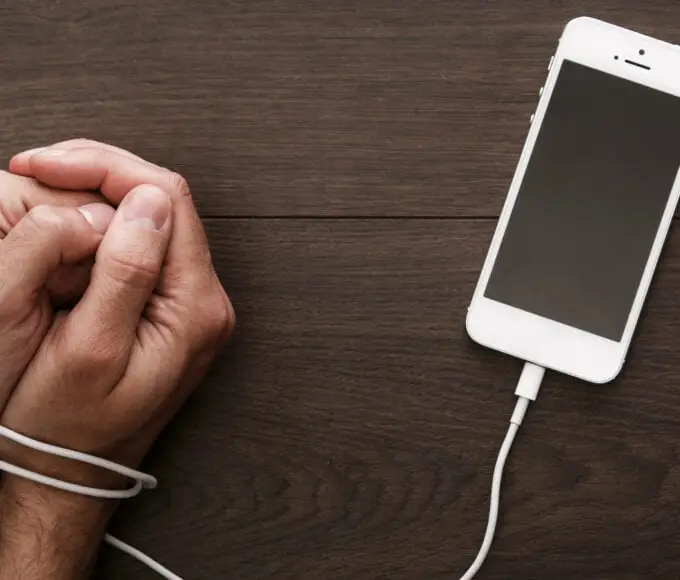Abstract: This blog post provides a comprehensive and engaging overview of agoraphobia, a specific phobia characterized by the fear of open spaces and social anxiety. We will explore the relationship between claustrophobia and agoraphobia, delve into the concept of social agoraphobia, and examine how agoraphobia is intertwined with social anxiety. The blog post will be presented in a simple language, making it accessible to all readers, regardless of their level of knowledge on the subject. In adherence to APA format, we will structure the content into ten s, each containing four subheadings, with seven key points under each subheading.
What is Agoraphobia(fear of going outside)?
- Definition of Agoraphobia: Agoraphobia is an anxiety disorder characterized by an intense fear of open spaces, crowded areas, or situations where escape might be challenging or help might not be readily available. Individuals with agoraphobia often feel trapped and unsafe in such environments, leading them to avoid these places to manage their anxiety.
- Prevalence and Incidence: Agoraphobia affects a significant number of individuals worldwide. Its prevalence varies across different populations and cultures, with women being more commonly affected than men. Incidence rates indicate the number of new cases diagnosed within a specific period, and understanding these figures helps mental health professionals assess the condition’s impact on society.
- Common Triggers of Agoraphobia: Agoraphobia triggers can be diverse and unique to each individual. They may include public transportation, large crowds, open spaces like parks or markets, and situations where leaving or escaping might be difficult, such as elevators or confined spaces.
- Impact on Daily Life: Agoraphobia can profoundly impact an individual’s daily life. It may lead to significant disruptions in social interactions, employment, and educational opportunities. Simple tasks like going to work, shopping, or attending social events can become overwhelming, causing distress and isolation.
Individuals with agoraphobia may experience severe anxiety or panic attacks when facing their triggers, making it challenging to engage in routine activities outside their comfort zones. Seeking professional help, such as therapy and support from loved ones, is essential in managing agoraphobia and regaining control over one’s life. With appropriate treatment and coping strategies, individuals can gradually overcome their fears and improve their quality of life.
Understanding Claustrophobia and Agoraphobia
- Difference Between Claustrophobia and Agoraphobia: Claustrophobia and agoraphobia are distinct anxiety disorders with different triggers. Claustrophobia involves a fear of enclosed or confined spaces, like elevators or small rooms, whereas agoraphobia centers on open spaces and situations where escape might be difficult. Understanding these differences is crucial in tailoring appropriate treatment for individuals with specific phobias.
- Shared Symptoms and Triggers: Despite their differences, both claustrophobia and agoraphobia share some symptoms, such as intense anxiety, rapid heartbeat, sweating, and a sense of impending doom. Additionally, they may share triggers, like crowded places or situations that evoke feelings of entrapment or limited control.
- Co-occurrence of Claustrophobia and Agoraphobia: It is possible for individuals to experience both claustrophobia and agoraphobia simultaneously, referred to as dual phobias. In such cases, a person may feel anxious and fearful in both enclosed spaces and open environments, leading to significant distress and avoidance behaviors.
- Treatment Approaches for Dual Phobias: Treating co-occurring claustrophobia and agoraphobia requires a comprehensive approach. Therapies like exposure therapy can help individuals gradually confront their fears in controlled environments. Cognitive-behavioral therapy (CBT) can be effective in modifying thought patterns and behaviors related to both phobias. Mental health professionals may also use medication to manage anxiety symptoms.
Individuals experiencing dual phobias should seek professional evaluation and treatment to tailor interventions according to their specific needs. With a combination of therapeutic approaches and support, individuals can make significant progress in managing both claustrophobia and agoraphobia, leading to improved well-being and a better quality of life.
Unraveling Social Agoraphobia(fear of going outside)
- Definition and Characteristics of Social Agoraphobia: Social agoraphobia, also known as social anxiety agoraphobia, is a specific type of agoraphobia that primarily revolves around the fear of social situations and interactions. Individuals with social agoraphobia may experience intense anxiety and discomfort in settings where they perceive judgment, embarrassment, or scrutiny from others.
- Triggers Specific to Social Agoraphobia: Social agoraphobia triggers can include attending parties, speaking in public, going to gatherings, or participating in group activities. Fear of being negatively evaluated or humiliated in social settings often drives avoidance behaviors in individuals with social agoraphobia.
- Impact on Social Interactions and Relationships: Social agoraphobia can significantly impact an individual’s ability to engage in social interactions and form meaningful relationships. Avoidance of social situations may lead to feelings of isolation, loneliness, and hinder personal and professional growth.
- Therapeutic Techniques for Social Agoraphobia: Various therapeutic approaches can help individuals with social agoraphobia. Cognitive-behavioral therapy (CBT) can address negative thought patterns and provide coping strategies. Exposure therapy enables gradual exposure to feared social situations, desensitizing anxiety responses. Group therapy offers a supportive environment to practice social skills and connect with others facing similar challenges.
Empowering individuals with social agoraphobia to face their fears and engage in social settings can lead to improved self-confidence and a more fulfilling social life. Seeking professional help and support from loved ones can be instrumental in overcoming social agoraphobia and fostering meaningful connections with others.
The Overlap Between Agoraphobia and Social Anxiety
- Distinct Features of Agoraphobia and Social Anxiety: Agoraphobia and social anxiety are separate anxiety disorders, each with its unique features. Agoraphobia revolves around the fear of open spaces and situations where escape might be difficult, while social anxiety focuses on the fear of negative evaluation in social settings.
- How Agoraphobia and Social Anxiety Interact: Individuals may experience both agoraphobia and social anxiety concurrently, leading to a more complex and challenging condition. Social anxiety can exacerbate agoraphobia, as fears of judgment in social situations may lead to avoidance of such settings, reinforcing the fear of open spaces.
- Addressing Agoraphobia and Social Anxiety Simultaneously: Treating agoraphobia and social anxiety together requires a comprehensive approach. Mental health professionals may employ integrated therapies that target both conditions, such as exposure-based techniques to confront social fears and open-space phobias.
- Strategies for Coping with Dual Conditions: Coping strategies include challenging negative thought patterns related to both agoraphobia and social anxiety, seeking support from loved ones or support groups, and practicing self-care techniques to manage anxiety symptoms effectively.
Recognizing the interconnected nature of agoraphobia and social anxiety is crucial for tailored treatment plans. Addressing both conditions simultaneously empowers individuals to make significant progress in managing their fears and improving their overall well-being and social functioning. Seeking professional guidance and building a strong support network can lead to successful outcomes in coping with these dual conditions.
Identifying Agoraphobia Triggers(fear of going outside)
- Common Triggers for Agoraphobia: Agoraphobia triggers can vary from person to person, but some common ones include crowded places, public transportation, open spaces like parks or large squares, and situations where escape might be difficult or embarrassing.
- Understanding Panic Attacks and Agoraphobia: Panic attacks often accompany agoraphobia and can intensify the fear of triggers. Panic attacks are sudden episodes of intense fear or discomfort, accompanied by physical symptoms like rapid heartbeat, sweating, trembling, and a feeling of losing control.
- Recognizing Avoidance Behaviors: Individuals with agoraphobia often develop avoidance behaviors to manage their anxiety. Avoiding places or situations that trigger fear may provide temporary relief, but it reinforces the phobia in the long run, making it essential to identify and address these behaviors.
- Gradual Exposure Therapy for Desensitization: Gradual exposure therapy is a therapeutic technique used to help individuals confront their fears in a controlled manner. By gradually exposing themselves to agoraphobia triggers, individuals can desensitize their anxiety responses and build confidence in managing these situations.
Identifying agoraphobia triggers is a crucial step in the treatment process. Understanding the connection between panic attacks and agoraphobia helps in managing anxiety symptoms effectively. Recognizing and addressing avoidance behaviors, along with engaging in gradual exposure therapy, empowers individuals to confront their fears, gradually reducing the impact of agoraphobia on their daily lives. Seeking professional guidance can further support individuals in navigating this process successfully.
Coping Strategies for Agoraphobia(fear of going outside)
- Self-Help Techniques for Agoraphobia: Individuals can employ self-help strategies to manage agoraphobia symptoms. Techniques such as deep breathing exercises, mindfulness meditation, and progressive muscle relaxation can help reduce anxiety levels. Setting achievable goals and gradually exposing oneself to triggers can also aid in building confidence and resilience.
- Seeking Support from Loved Ones: The support of family and friends can be invaluable in coping with agoraphobia. Openly communicating about the condition, sharing fears and progress, and receiving understanding and encouragement can make a significant difference in one’s journey towards recovery.
- Professional Counseling and Therapy Options: Seeking help from mental health professionals is vital for effective agoraphobia treatment. Cognitive-behavioral therapy (CBT) can help challenge negative thought patterns and modify behaviors related to agoraphobia. Exposure therapy, either in vivo or through virtual reality (VR), allows individuals to confront triggers in a controlled environment.
- Medication and Its Role in Agoraphobia Treatment: Medication may be prescribed by healthcare providers to manage severe anxiety or panic symptoms associated with agoraphobia. Antidepressants or anti-anxiety medications can help stabilize mood and reduce fear, especially when used in conjunction with therapy.
Combining self-help techniques, seeking support from loved ones, and engaging in professional counseling or therapy provides a comprehensive approach to managing agoraphobia effectively. Each individual’s journey is unique, and a personalized treatment plan can empower them to take control of their fears and gradually regain their independence and freedom in daily life.
Overcoming Agoraphobia with Exposure Therapy
- Overview of Exposure Therapy: Exposure therapy is a proven therapeutic approach used to treat agoraphobia and other anxiety disorders. It involves gradually and systematically exposing individuals to their feared situations or triggers, helping them learn that these situations are not as dangerous as perceived.
- Step-by-step Process of Exposure Therapy: Exposure therapy typically follows a systematic process. It begins with creating a fear hierarchy, where the individual ranks situations from least to most anxiety-provoking. Therapists then guide individuals through these situations gradually, starting with the least anxiety-inducing ones and progressing towards more challenging ones.
- Virtual Reality (VR) in Exposure Therapy: Virtual reality (VR) technology has revolutionized exposure therapy by providing realistic and immersive environments without physically confronting real-life triggers. Individuals can engage in exposure exercises in a safe and controlled setting, which can be particularly beneficial for those with severe agoraphobia.
- Success Stories of Agoraphobia Recovery: Exposure therapy has been successful in helping many individuals overcome their agoraphobia and resume their normal activities. Countless success stories highlight how individuals faced their fears, gradually expanded their comfort zones, and improved their quality of life through exposure therapy.
By embracing exposure therapy, individuals with agoraphobia can break free from the limitations imposed by their fears. The process, when guided by trained professionals, can lead to remarkable progress and a renewed sense of empowerment, enabling individuals to reclaim their lives and thrive beyond the confines of agoraphobia.
Preventing Agoraphobia Relapses(fear of going outside)
- Maintaining Progress After Recovery: After overcoming agoraphobia, it is crucial to maintain the progress made during treatment. Continuously practicing coping strategies and exposure techniques can help reinforce newfound skills and prevent relapses.
- Identifying Early Warning Signs: Recognizing early warning signs of agoraphobia relapses is essential for prompt intervention. Heightened anxiety, avoidance behaviors, and negative thought patterns may indicate the need for additional support or therapy.
- Building Resilience to Triggers: Developing resilience to agoraphobia triggers involves gradually exposing oneself to challenging situations while continuing to implement coping strategies. Each successful encounter with triggers strengthens resilience and reduces the fear’s hold.
- Support Groups and Continuing Care: Engaging in support groups or continued therapy can provide ongoing encouragement and a sense of community. Regularly sharing experiences, successes, and setbacks can foster a supportive network that aids in maintaining recovery.
Preventing agoraphobia relapses requires dedication and ongoing effort. By staying vigilant, seeking support, and proactively managing anxiety, individuals can sustain their progress and lead fulfilling lives free from the constraints of agoraphobia. Remember, relapses are a normal part of recovery, and seeking help when needed is a sign of strength and commitment to continued well-being.
Agoraphobia in the Media and Society
- Misconceptions and Stigma: Agoraphobia is often subject to misconceptions and stigmatization in society. Common misunderstandings about the condition can lead to judgment and prejudice against individuals facing agoraphobia, hindering their willingness to seek help and support.
- Portrayal in Movies and Television: The portrayal of agoraphobia in movies and television can be inaccurate or sensationalized, perpetuating stereotypes and misconceptions. Responsible and accurate representation is crucial to foster understanding and empathy towards those experiencing agoraphobia.
- Advocacy and Awareness Efforts: Advocacy and awareness initiatives play a vital role in dispelling misconceptions and reducing stigma surrounding agoraphobia. By educating the public and promoting empathy, these efforts pave the way for a more compassionate and supportive society.
- Encouraging Empathy and Support: Encouraging empathy and support for individuals with agoraphobia can create a safe and understanding environment. Empathetic attitudes fostered in society can help those with agoraphobia feel accepted and validated, enhancing their recovery journey.
Shifting societal perceptions of agoraphobia from one of stigma to one of empathy and support is essential for building a more inclusive and compassionate community. Advocacy efforts and accurate portrayals in the media can contribute to this positive change, allowing individuals facing agoraphobia to feel understood, accepted, and empowered on their path to recovery.
Living a Full Life with Agoraphobia(fear of going outside)
- Embracing Accomplishments, Big and Small: Celebrating achievements, no matter how big or small, is essential in living a full life with agoraphobia. Acknowledging progress and overcoming challenges can boost self-confidence and motivation.
- Balancing Challenges and Achievements: Striking a balance between managing challenges posed by agoraphobia and pursuing personal achievements is vital. Understanding that setbacks are normal and part of the journey allows for resilience and perseverance.
- Pursuing Goals Despite Agoraphobia: Agoraphobia does not need to hinder one’s aspirations and dreams. Setting realistic goals and taking gradual steps towards them, while managing anxiety, enables individuals to move closer to their dreams.
- Celebrating Progress in Agoraphobia Management: Managing agoraphobia involves continuous effort and progress. Celebrating the milestones achieved in therapy, exposure exercises, and personal growth reinforces positive behavior and fosters optimism.
Living a full life with agoraphobia means embracing the journey and embracing one’s strengths and achievements. Balancing challenges and progress allows for personal growth and fulfillment despite the condition’s obstacles. With perseverance and support, individuals with agoraphobia can lead meaningful and enriching lives, confidently embracing each step they take toward healing and well-being.
Conclusion
Agoraphobia is a complex phobia that involves the fear of open spaces and social anxiety. Understanding its triggers and symptoms is crucial for effective treatment. Through coping strategies like gradual exposure therapy and seeking support, individuals can manage and overcome agoraphobia. The overlap with social anxiety underscores the importance of addressing both conditions simultaneously for holistic recovery. Embracing accomplishments and pursuing goals can lead to a fulfilling life despite challenges. This blog post aimed to provide a simple and engaging resource, shedding light on agoraphobia, fostering empathy, and offering hope to those navigating this journey towards healing and improved well-being.
Takeaways
- Understanding Agoraphobia: Agoraphobia is an anxiety disorder characterized by a fear of open spaces and situations where escape might be difficult. Recognizing its symptoms and triggers is essential for early intervention.
- Interplay with Social Anxiety: Agoraphobia and social anxiety often coexist, intensifying the challenges faced by individuals. Addressing both conditions simultaneously can lead to more effective treatment outcomes.
- Coping Strategies: Various coping techniques, such as gradual exposure therapy and stress management, can empower individuals to confront and manage agoraphobia’s fears.
- Seeking Support: Engaging a support network, including loved ones and professionals, can provide valuable encouragement and guidance throughout the recovery journey.
- Overcoming Dual Phobias: Understanding the relationship between agoraphobia and claustrophobia is crucial to implementing appropriate treatment approaches for individuals experiencing both phobias.
- Virtual Reality in Therapy: Virtual reality technology can be utilized in exposure therapy, allowing individuals to face feared situations in a controlled environment.
- Advocacy and Awareness: Raising awareness about agoraphobia helps combat misconceptions and reduces stigma, fostering a more empathetic and supportive society.
- Celebrating Progress: Recognizing and celebrating achievements, no matter how small, can boost self-confidence and motivation in managing agoraphobia.
- Holistic Approach: A holistic recovery approach, addressing various aspects of well-being, is vital for managing agoraphobia effectively.
- Embracing Life: Despite the challenges posed by agoraphobia, individuals can lead fulfilling lives by pursuing their goals and aspirations while managing their condition.
Last worded from Author
Dear readers, Thank you for joining me on this journey through the world of agoraphobia. I hope this blog post has shed light on this complex phobia and provided you with valuable insights. Remember, you are not alone in your struggles, and seeking help is a sign of strength. Embrace the support of your loved ones and consider reaching out to mental health professionals who can guide you towards healing and growth. You have the power to confront your fears, step by step, and lead a fulfilling life despite agoraphobia’s challenges. With determination and compassion, let’s navigate this path together towards a brighter, anxiety-free future.
FAQs
Agoraphobia is an anxiety disorder characterized by the fear of open spaces and situations where escape might be challenging. On the other hand, social anxiety involves excessive fear and self-consciousness in social situations. While both may coexist, agoraphobia centers on open spaces, whereas social anxiety focuses on social interactions.
Yes, it is possible to experience both agoraphobia and claustrophobia simultaneously. When individuals fear open spaces and enclosed areas, it is known as dual phobias. Understanding the interplay between these phobias is crucial for effective treatment.
Coping strategies include gradual exposure therapy, stress management techniques, seeking support from loved ones, and engaging in self-help practices. These methods can empower individuals to confront their fears and manage symptoms effectively.
Yes, agoraphobia is treatable. Therapeutic techniques, such as exposure therapy, cognitive-behavioral therapy (CBT), and medication, can be beneficial. Seeking professional help from mental health experts ensures personalized treatment plans.
Raising awareness involves dispelling misconceptions about agoraphobia and showing empathy towards those affected. You can participate in advocacy efforts, support groups, and educational initiatives to foster a more understanding and supportive society for individuals facing agoraphobia.
Reference
- Agoraphobia – Wikipedia. https://en.wikipedia.org/wiki/Agoraphobia.
- Agoraphobia – Symptoms and causes – Mayo Clinic. https://www.mayoclinic.org/diseases-conditions/agoraphobia/symptoms-causes/syc-20355987.
- Agoraphobia | Johns Hopkins Psychiatry Guide. https://www.hopkinsguides.com/hopkins/view/Johns_Hopkins_Psychiatry_Guide/787057/all/Agoraphobia.
- Agoraphobia – Psychiatric Disorders – Merck Manuals Professional Edition. https://www.merckmanuals.com/professional/psychiatric-disorders/anxiety-and-stressor-related-disorders/agoraphobia.
- Agoraphobia | SpringerLink. https://link.springer.com/referenceworkentry/10.1007/978-0-387-09757-2_26.
Read Also







